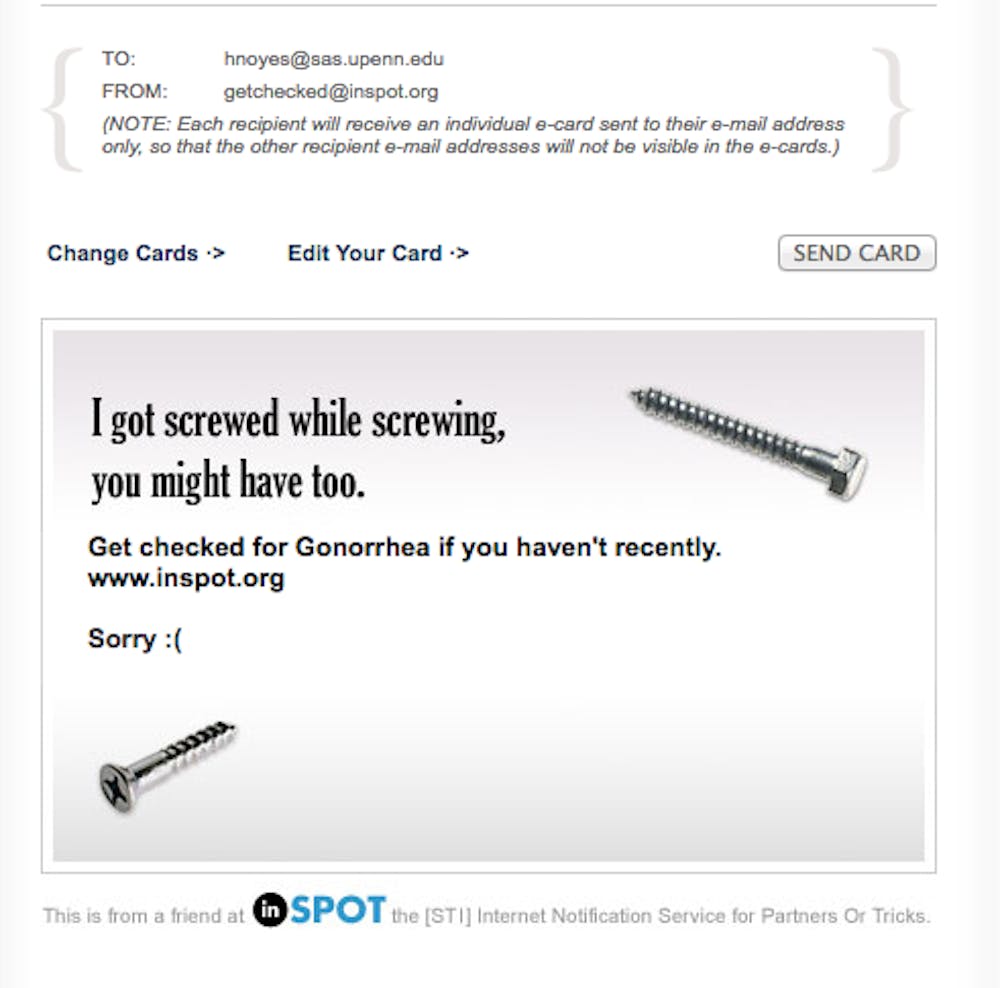Remember those awkward, poorly acted, more–painful– than–childbirth, supposedly informational films we were forced to watch in health class? The plot was always the same: unfashionably dressed boy and girl are in a casual, undefined, sexual relationship. Girl goes to get tested because men aren’t expected to be responsible, and she discovers that she has gonorrhea. “But doctor,” she says, “I don’t understand, he pulled out!” “Well, actually Pauline,” the doctor says, “While there are various forms of birth control, condoms are the only effective method of preventing STDs.” She is humiliated at the prospect of telling the boy, but, after a long day of soul searching, she picks up her curly–corded phone and calls him. “But Pauline,” says the boy, “I don’t understand, I pulled out!” and she says “Well, actually…” It is truly riveting cinema.
As uninformative and un–compelling as those films are, they do present an issue that affects us all: STDs are common and easily transmitted (a quarter of college students have one and 80% of all people who have one experience no noticeable symptoms). Therefore, it’s important to notify your past partners if you have reason to believe they may be infected. But, for some strange reason, our culture has stigmatized people with contagious warts on their sex organs, which renders taking responsibility a major social liability. Well, good news: there are internet services that allow you to do so anonymously. The bad news, of course, is that now sexual health films will become even more boring.
Here’s the scenario: like Pauline, you’ve just been for your routine sexual health screening at SHS—which you never miss because you’re responsible and strongly feel that STDs are lame—and, despite your strict condom usage, you’ve contracted chlamydia, a prevalent and harmful disease that often lacks noticeable symptoms. You recognize the importance of notifying any partner of yours who may also have been exposed. But you want to do so without reenacting the "You Have AIDS" song from Family Guy. Here are three websites that will do the dirty work for you!
On this website, you select the STDs you have. When you click them, a brief description of the symptoms pop up, and you have to tick a box that says “Yes, this one.” You then have the option to select a time of exposure (an approximation of when you may have given it to the recipient), and you enter the email or phone number of the person. They will receive a discrete message with a link to the site and a code they can use to view the message, which includes the information you provided along with advice on getting tested. And, if you unlock the notifications of the app, you can correspond with the recipient. Once you send the message, the website offers these kind words: “Thanks for spreading the word and not the disease!”
This website provides two services.
The first is a list of “Tips and Scripts” for notifying the partner yourself, without anonymity. Most of these are pretty obvious to anyone with the basic social skills required to have sex in the first place (Oh really, it’s polite to check that your potential infectee isn’t with his entire extended family with his phone on speaker before you notify them?).
The second is an anonymous email service. It differs from the others in that it only lists diseases that are curable, easily tested for, common in the United States and often asymptomatic. Troublingly, this leaves us with only three: chlamydia, gonorrhea and trichomoniasis. The information on the website suggests that it might be irresponsible to anonymously notify someone of a disease that is incurable (like HIV) or not easily tested for (like herpes) because this information can cause a lot of anxiety and, if the testing isn’t simple or results are difficult to interpret or the disease is incurable, this anxiety cannot be relieved. After you select whichever of the three diseases you have, you can preview an email which includes information on how the disease in contracted, the symptoms and how and where to get tested. It requires you to tick a box certifying that you are genuinely a previous sexual partner of a recipient who genuinely might be infected.
This website allows you to be festive with your sexual responsibility by providing e–cards. You choose your STD, enter both your email addresses (use Penn Directory) and you also have the option of sending a short personal message. But be sure to tick the box that says “Send Anonymously.” Otherwise you might as well just deliver the bad news via Facebook message.







